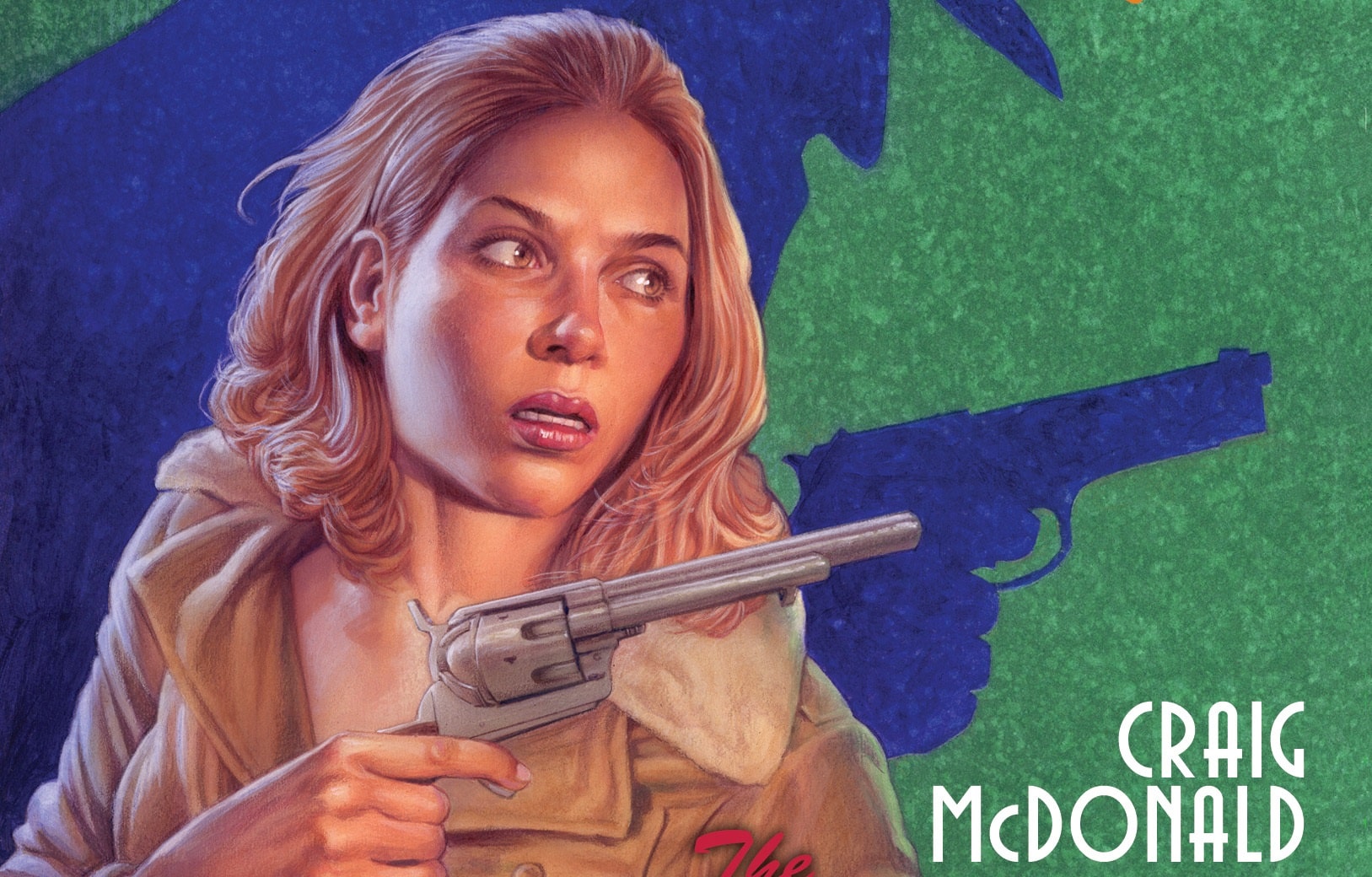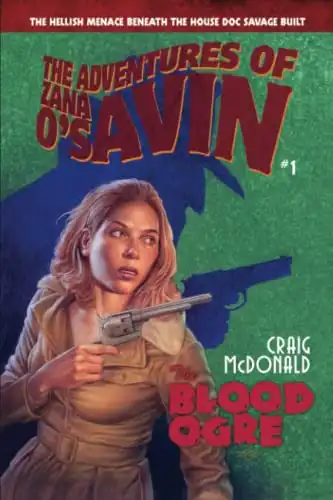Ron Capshaw takes a closer look at The Blood Ogre: The Hellish Menace Beneath the House Doc Savage Built (The Adventures of Zana O’Savin) by Craig McDonald (Author) and Douglas Klauba (Illustrator).
*****
It seems every decade someone attempts to resurrect Doc Savage and fails. Extremely popular during the pulp era , Doc, in tales penned primarily by Lester Dent, had a sixteen year run in his own magazine, from 1933 until 1949. In 1964, attempting to cash in on the James Bond craze, Bantam books began reprinting the pulp stories in paperback form. This also proved popular and Bantam published the entire run by 1991.
Outside of the pulp stories, Doc has had a short shelf life. To capitalize on the uncomfortably campy film in 1975, Marvel comics published a black and white magazine that only lasted 8 issues. DC tried various attempts, and used the novel approach of bringing him into the 1980s. But sales were low, and Doc once again was off the racks.
Doc, in tales penned primarily by Lester Dent, had a sixteen year run in his own magazine, from 1933 until 1949.
The problems may vary, but the main reason for the failure—-apart from how pillaged Doc has been by the creators of Superman, James Bond and Indiana Jones— is how writers have used only the 1930s version of Doc,a flawless superman, and not embraced the character as a whole. By including the 1940s version, Doc is revealed to have a character journey that makes him the most complicated and tragic of pulp heroes.
In The Blood Ogre, Craig McDonald captures Doc is all this totality. For all his training overseen by his father, beginning at 18 months and lasting till young adulthood, Doc by World War II was proving a failed experiment. Not as efficient in lip reading or in flinging piles of crooks about, this Doc was neurotic, unsure of himself, and now had daddy issues. He was downright resentful toward his father for robbing him of a normal childhood; in some instances, Dent hinted that the father was insane.
In this seamless, creative mixture of high adventure, the biography of Lester Dent, the occupational hazard of a writer sometimes seeing the character they wrote about for decades on a monthly basis, and a dash of supernatural thrown in, The Blood Ogre starts with Doc in decline. McDonald studiously and creatively locates the reason for this in one of the pulp adventures. Much of the suspense of The Blood Ogre is whether Doc can get up and running against a foe—no spoilers—comes very close to home.
McDonald fulfills what pulp writers were paid to do and is often a lost art for thriller writers today by getting the reader to turn the page. He achieves this without the slip-shod writing of Dent that often came off as padded hackwork. McDonald is a good prose writer who uses violence solely to advance the plot and not because he has written himself into a corner (another pulp writer, Raymond Chandler advised colleagues that when stuck have someone come in with a gun)..
The Blood Ogre is more than just about Doc. McDonald plausibly brings in pulp writer Walter Gibson, and a certain sinister character he wrote about whose sightings by the writer could be real.
But the strength of this excellent novel is how McDonald shows there is still life left in Doc if one would only read all the novels and start from there.
MacDonald has shown that there is still life left in Doc if only one would read all the novels and then start from there.
*****
Mystery Tribune’s coverage of latest and most notable books in crime, horror, mystery and thriller space is available here.






